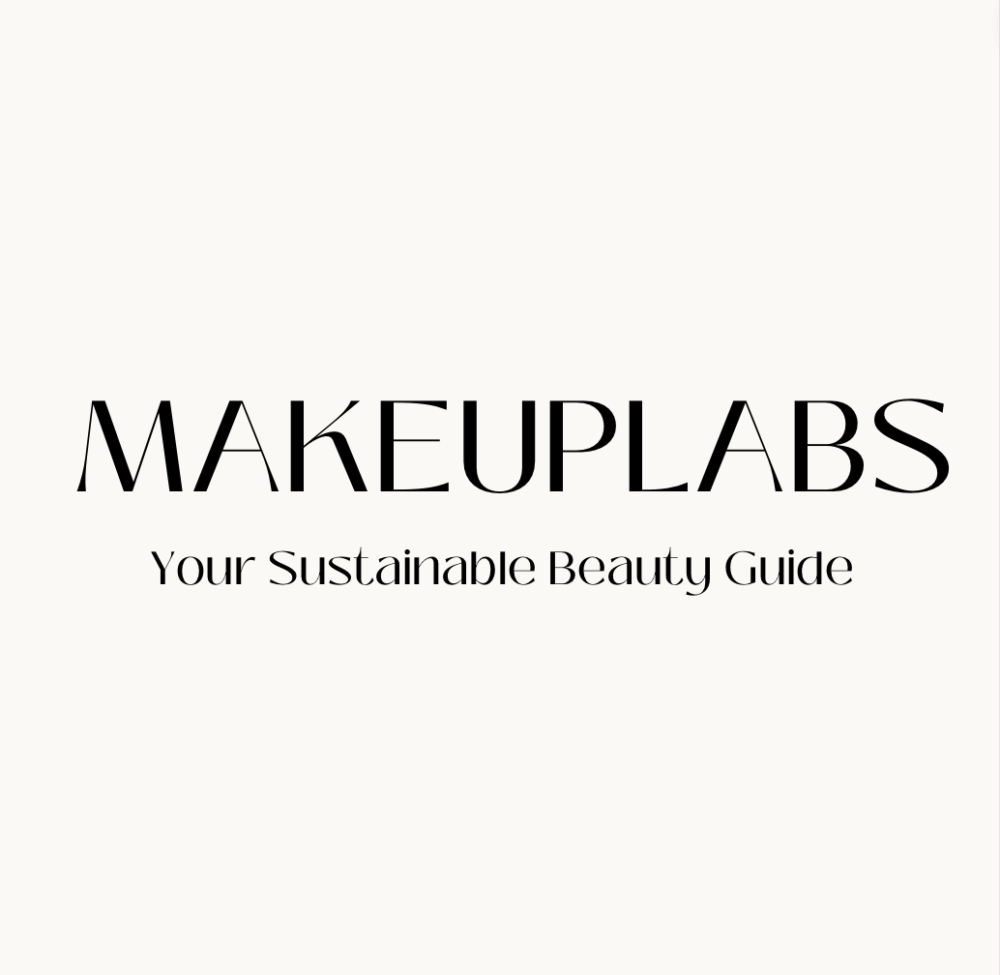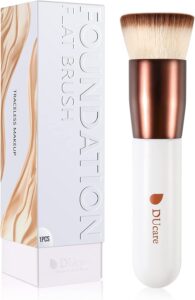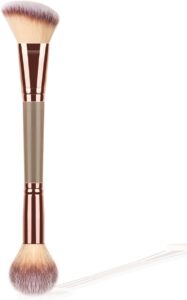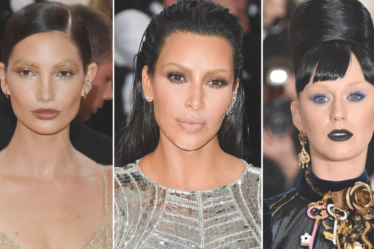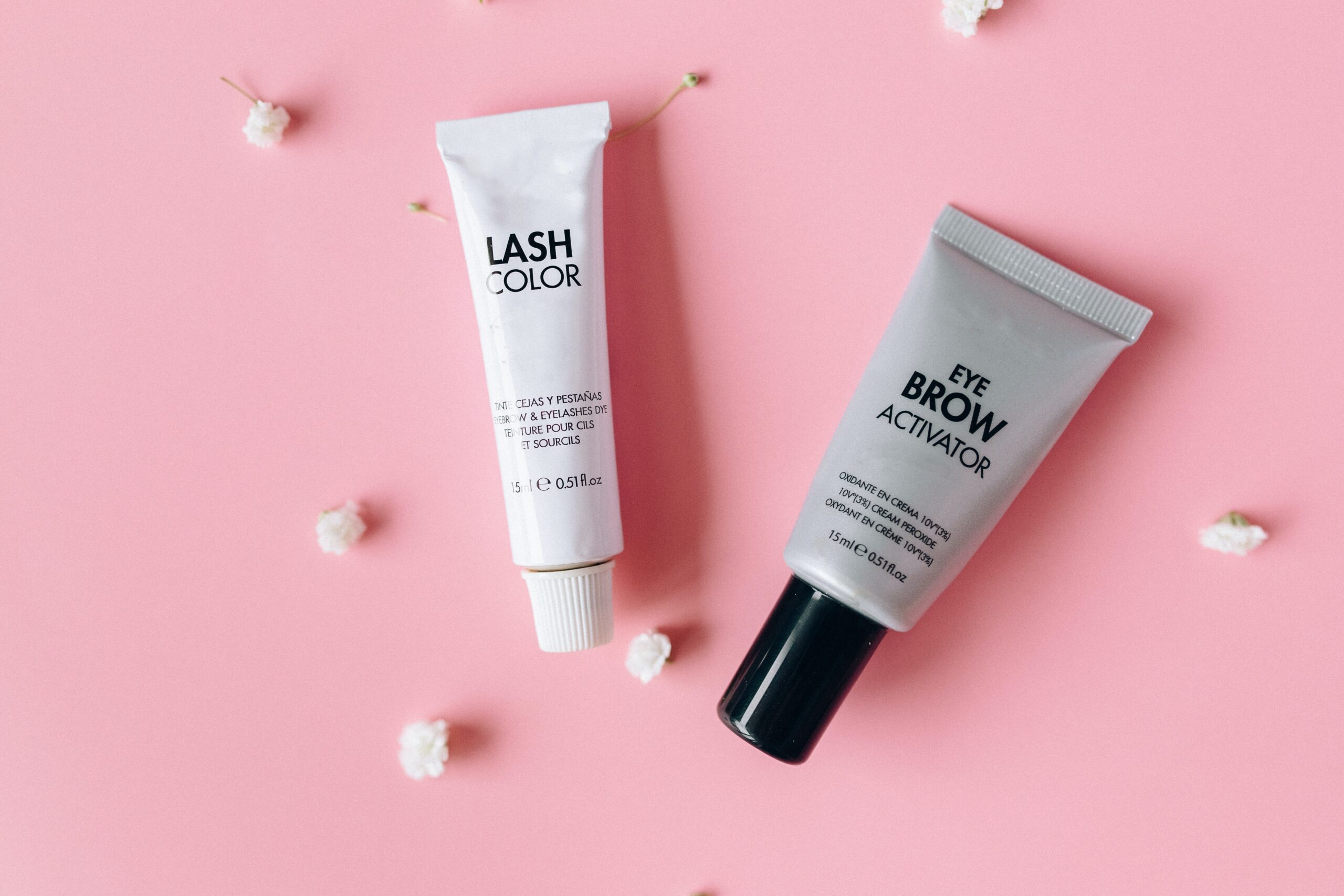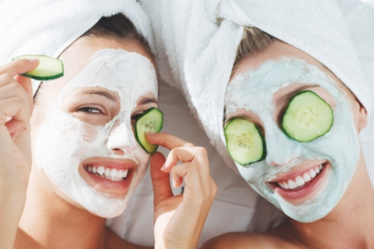
The Different Shapes of Makeup Brushes: Function and Application Guide
The tools used throughout the application process have a big impact on getting a flawless cosmetic appearance. Makeup brushes are essential for producing accurate and polished results. Anyone looking to improve their makeup skills must comprehend the numerous makeup brush forms and their unique functions. To help you create a diverse brush collection, this guide will examine several brush forms and their advantages.
Foundation Brushes:
A flawless makeup base can be achieved with the help of the proper foundation brush. Different foundation brush varieties are available to suit various requirements and tastes. The flat, paddle-shaped foundation brush, the buffing brush, and the stippling brush are among of the most popular types.
Among makeup tools, the flat, paddle-shaped foundation brush is a classic. Its flat design and well packed bristles make it perfect for applying liquid or cream foundations with seamless coverage. The formulation enables an equal, smooth application throughout the skin, helping to conceal flaws without giving off a heavy, unnatural appearance. Apply foundation on the brush before lightly sweeping it across your face, working outward from the center. To get rid of any lines or streaks, blend in small, circular motions.
A buffing brush, on the other hand, is made of thick, soft bristles that are often arranged in a circle. For a natural finish, this brush works wonders at blending foundation into the skin. A smooth, glossy appearance is achieved by evenly distributing the substance into the skin with the help of the closely packed bristles. Although they are equally efficient with liquids and creams, buffing brushes perform extremely well with mineral or powder foundations.
With longer, less dense bristles at the top and shorter, denser bristles at the base, the stippling brush has a distinctive dual-fiber design. With liquid or cream foundations, this combination produces an airbrushed finish that looks natural. The brush aids in the flawless blending of foundation, enabling buildable coverage that doesn’t look heavy or cakey.
It’s crucial to take your skin type and preferred level of coverage into account when selecting the best foundation brush. The ideal tool to use to get a sheer, natural finish might be a stippling brush. A flat, paddle-shaped, or buffing brush can be more appropriate for your needs if you like medium to full coverage. By being aware of the advantages of each brush, you can select the one that works best with your foundation and gives you the appearance you want.
Concealer Brushes:
Concealer brushes are made to make it easier to apply concealer precisely and blend it in, resulting in a flawless and natural finish. These brushes are available in a variety of sizes and shapes, each suited for a particular use. The short, tapered concealer brush, the flat concealer brush, and the fluffy concealer brush are the three most popular forms.
Any makeup kit must contain the little, tapered concealer brush. Its tiny, sharp bristles provide precise concealment of imperfections like spots, warts, and discolouration. This brush is ideal for precise applications because it hides flaws without damaging the skin around them. Apply a tiny amount of concealer to the brush’s tip before gently dabbing it onto the area that needs to be covered. To avoid wiping away the product, blend using a patting motion. By using this method, you can ensure that the concealer is centered on the imperfection and provide maximum coverage.
The flat concealer brush, on the other hand, is distinguished by its flat, bendable bristles. For usage under the eyes or on broader areas, this design is appropriate. The broad, flat design allows for even and smooth coverage, guaranteeing that the concealer is applied properly to the face. For covering bigger regions of discolouration or dark circles, it works exceptionally well. For a natural appearance, apply the concealer under the eyes in broad strokes and blend outwards. To prevent tugging or dragging the fragile skin in this area, always use a soft touch.
The soft concealer brush, as a final step, is used to blend and diffuse cosmetics. This brush is ideal for creating a flawless transition between foundation and concealer thanks to its soft, fluffy bristles. It gently buffs concealer into the face, giving the appearance of an airbrushed, soft-focus finish. This brush is particularly excellent for applying concealer to bigger areas where a more diffused coverage is desired, like the cheekbones or forehead.
Powder Brushes:
A powder brush is a necessary component of any makeup kit. It comes in a variety of sizes and shapes, each created to fulfill a certain function. The big, fluffy powder brush, the angled powder brush, and the kabuki brush are the three most popular kinds of powder brushes.
The wide, fluffy powder brush has long, soft bristles and a rounded head. Its main function is to apply loose or pressed setting powder evenly across the face. To set your makeup and tame shine, the soft, dome-shaped brushes gather up the ideal powder and distribute it evenly across your skin. Use this brush by dipping it into the powder, tapping out the excess, and then gently sweeping it in a circular motion over your face. Utilizing this method guarantees a light finish that won’t interfere with the makeup applied over it.
The angled powder brush’s flat edge and slanted bristles make it perfect for sculpting and contouring the face. The bristles’ form enables precise powder application, producing a chiseled impression. This brush is ideal for applying bronzer or contouring powder to help define your facial features because it fits snugly under the cheekbones. Use long downward strokes for a more defined shape or small upward strokes for a diffused appearance.
The kabuki brush is a multipurpose tool that can be used to apply powder, blush, or bronzer. It is distinguished by its short handle and dense bristles. Its broad, flat top makes buffing in powder and producing a flawless finish a breeze. The bristles’ density permits effective product pick-up and even distribution, giving the finished product a smooth and polished appearance.
Consider the desired finish and texture of your product while selecting the proper powder brush. A big, fluffy brush is great for applying loose or pressed powders to achieve a light, uniform finish. An angled brush is ideal for contouring and sculpting, whilst a kabuki brush is versatile and can be used with a variety of powder products. Understanding how each brush works will help you get the most out of your beauty regimen.
Blush and Contour Brushes:
Blush and contour brushes are essential for sculpted, luminous skin. They come in a variety of shapes and sizes, each with its own function. The most frequent varieties are rounder blush brushes, angled blush brushes, and fan brushes.
Most makeup kits include a rounded blush brush. Its smooth, rounded bristles apply blush in a delicate, diffused manner, resulting in a healthy, natural-looking flush. To use, swirl the brush in the blush, gently tap off the excess to minimize over-application, and apply the product in a circular motion on the apples of your cheeks. To produce a smooth transition, blend the blush outward along your cheekbones.
Another crucial tool for contouring and shaping cheekbones is the angled blush brush. Its angled bristles conform to the natural slope of your cheekbone, allowing for precise contouring and color placement. This brush is particularly excellent for blending, ensuring that your contouring looks natural rather than overly dramatic. Simply use the brush to apply your contour product around the hollows of your cheekbones, then blend upward for a defined yet subtle result.
The fan brush, with its flat, fan-like design, has unique usefulness in creating a delicate, ethereal light. It’s ideal for applying a small dusting of highlighter to your face’s high points, such as your cheekbones, brow bone, and cupid’s bow. The feathery bristles provide a delicate application that avoids an overly glossy or sparkly appearance.
When choosing the right blush and contour brushes, keep your face shape and desired intensity in mind. When applying blush or contour, a rounded or angled brush is adaptable and works well for most facial shapes. If you like a more subtle, natural glow, a fan brush is a perfect choice. Understanding the purpose and method for each brush type can help you achieve the look you want with ease and precision.
What are some common mistakes people make when cleaning their brushes?
Cleaning makeup brushes is critical for keeping them in good condition and preventing germs, grime, and residue accumulation. However, several typical cleaning blunders can impair the efficiency of brushes and destroy them. Here are a few things to avoid:
- Brushes are not cleaned frequently enough: Brushes should be cleaned on a regular basis to preserve performance and ensure hygienic application. Brushes should be cleaned at least once a week for liquid or cream products and every two weeks for powder products, depending on how frequently they are used.
- Cleaning your brushes with abrasive or harsh chemicals might harm the bristles and make them brittle, so stay away from doing so. Use a mild soap or gentle brush cleanser instead that is made especially for makeup brushes.
- Brush soaking: Soaking a brush in water for a long time can weaken the glue holding the bristles in place, resulting in them falling out or the brush falling apart. Avoid soaking the handle and ferrule (the metal piece joining the bristles and handle), and instead concentrate on cleaning the bristles.
- Rough handling: If you clean your brushes too vigorously, the bristles may lose their shape and tear. Use your fingers or a brush cleaning pad to gently massage the brush cleanser or soap into the bristles; do not tug on the bristles.
- Brushes should be dried upright to avoid water leaking into the ferrule, which would weaken the adhesive and ruin the brush. To avoid water damage, dry brushes horizontally on a fresh towel or by hanging them upside down from a brush drying rack.
Understanding the numerous makeup brushes available and their unique purposes is essential to mastering the art of makeup application. Different brush forms accommodate various cosmetic ingredients and application methods, resulting in accurate and polished results. You may easily achieve a broad range of desired effects by playing with different brush shapes and polishing your abilities.
